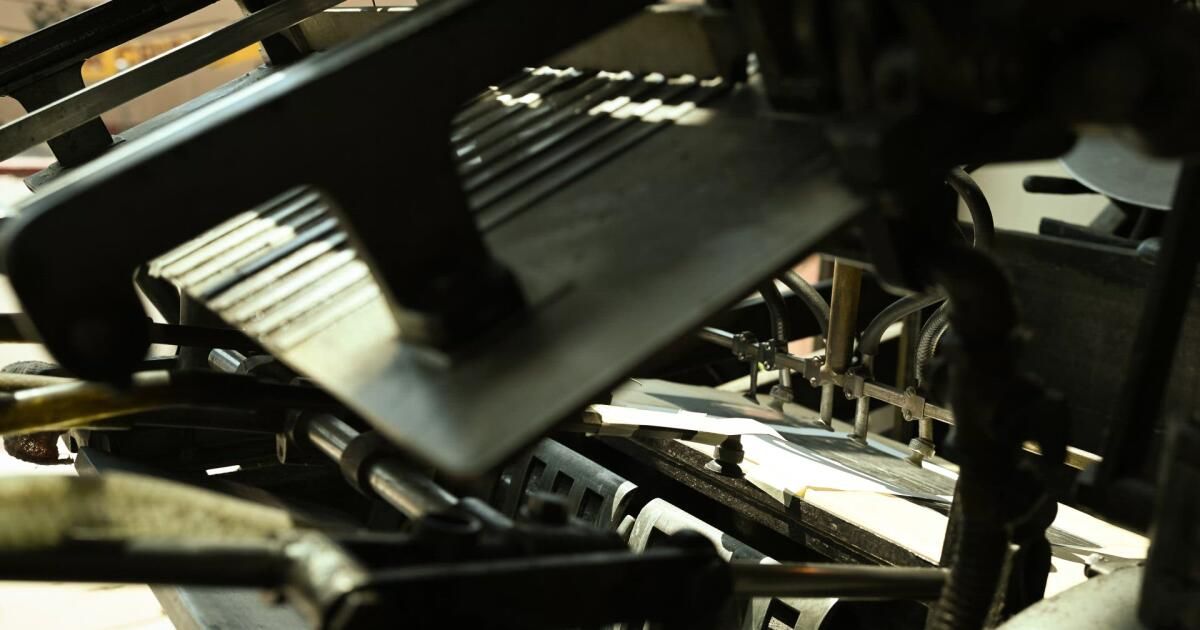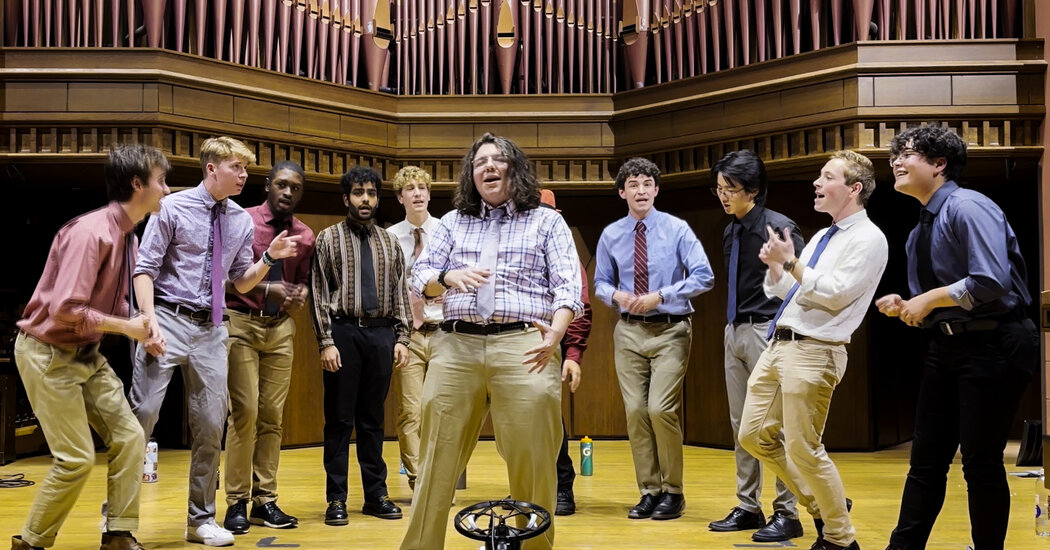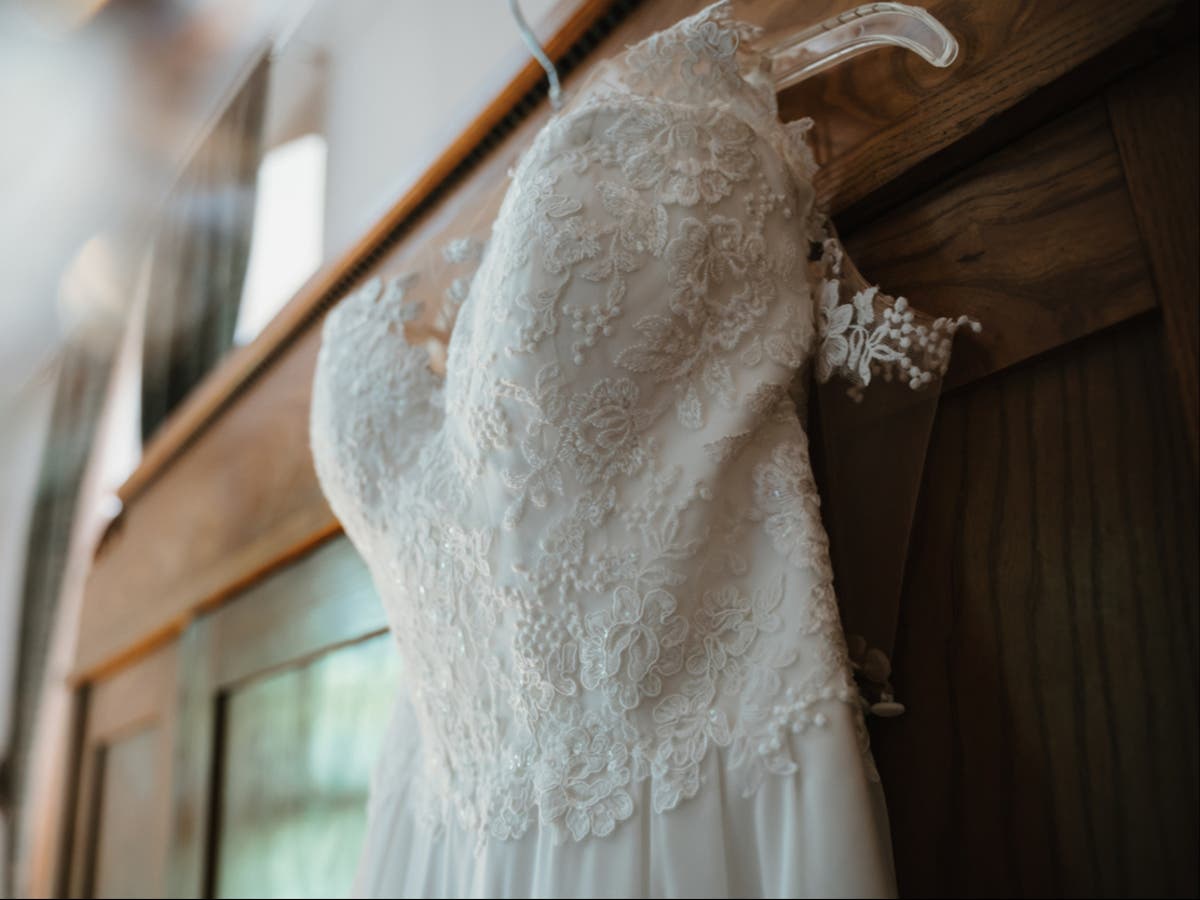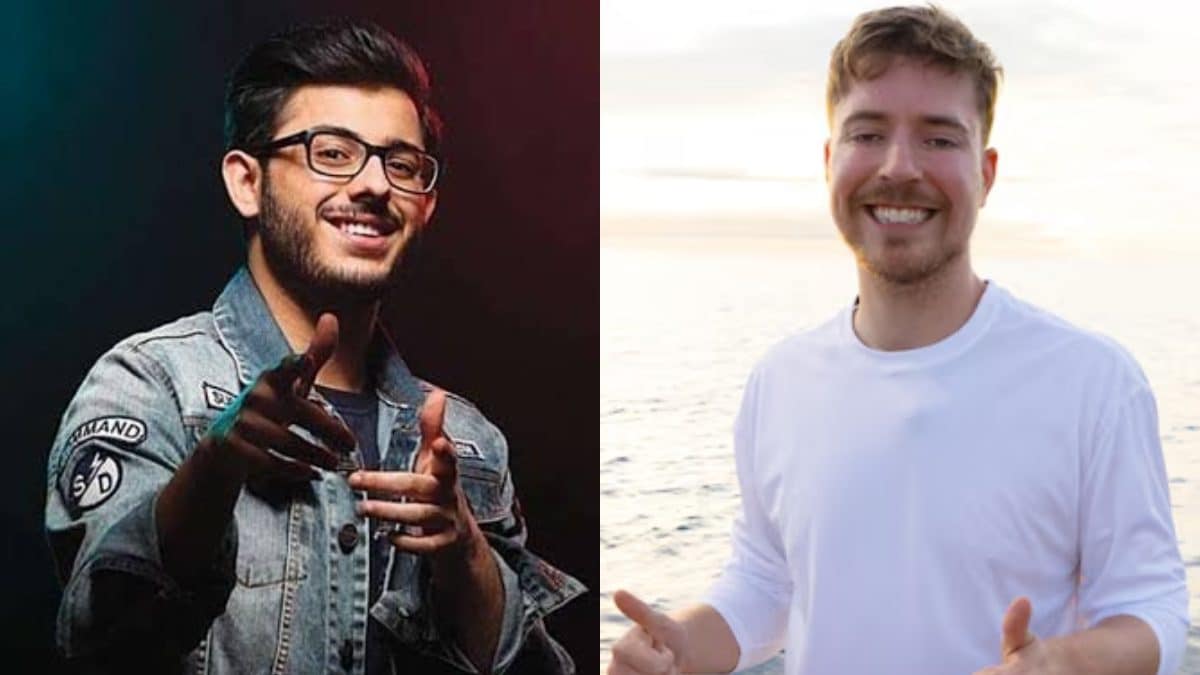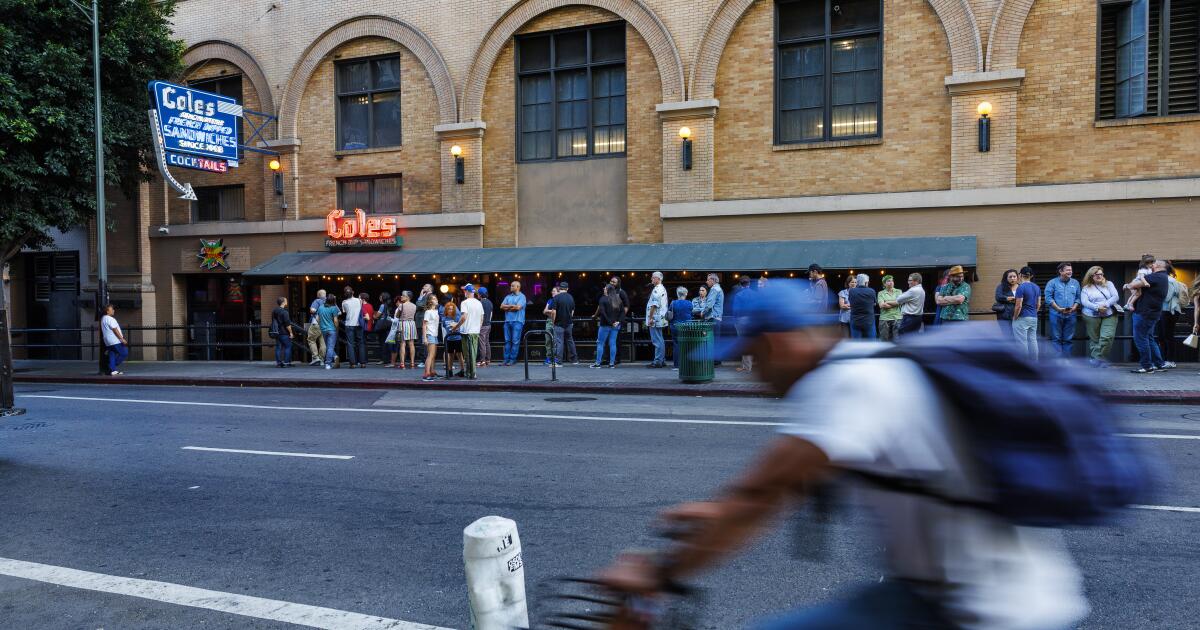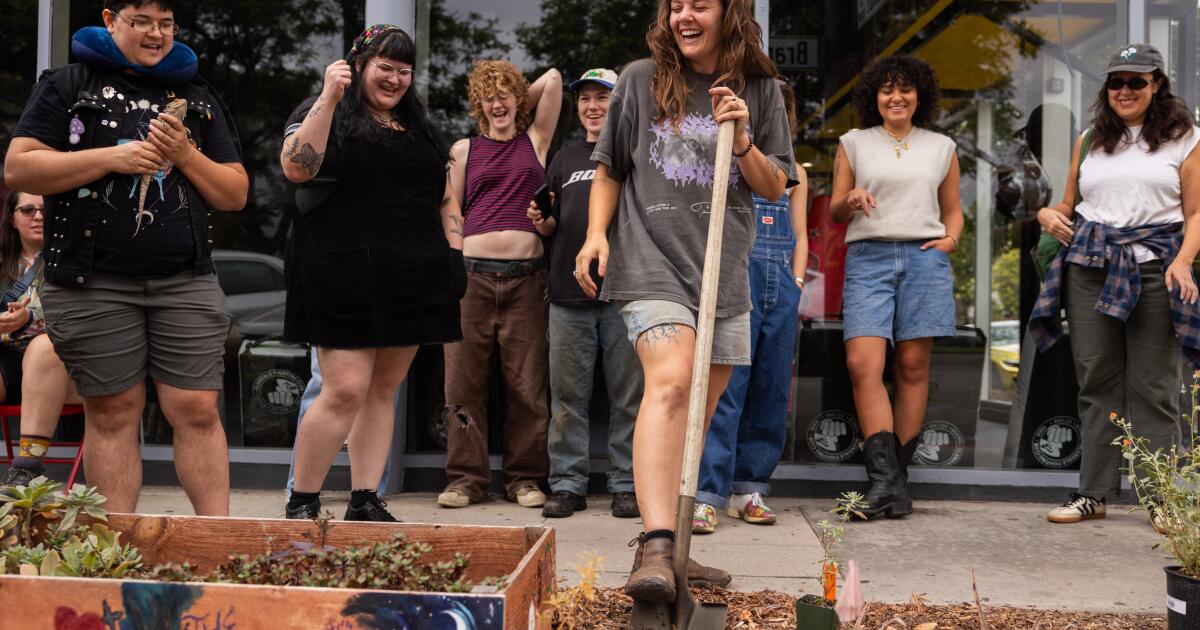Survive in an obsolete industry while Anteater Typography has required fundamental elements of entrepreneurship. Skill, dedication, creativity and professionalism are essential. General manager and co-owner Cary Ocon returns to another topic that has kept what is now the city's oldest letterpress printing house in business since 1968.
“Bad luck,” he says.
Brothers Brooks and Cary Ocon on the floor of Aardvark Letterpress.
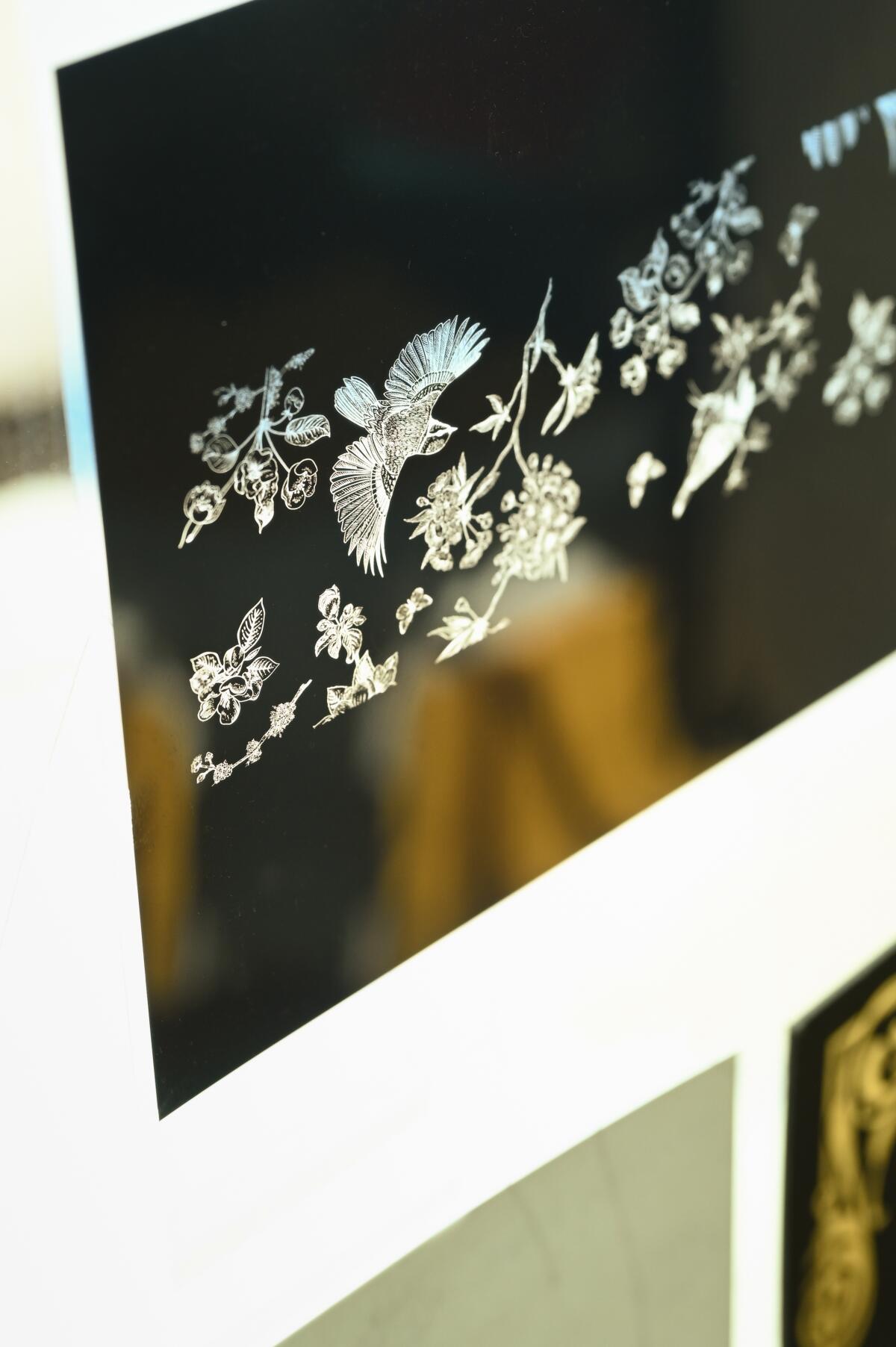
A negative test taped to the Aardvark office window.
The lack of pretension and refinement here belies the pedigree of much of Aardvark's customer base. Entertainment, fashion, art and other creative industries converge on the unlikely corner of 7th and Carondelet streets overlooking the southwest edge of MacArthur Park. Both basic and technically complex, the manufacturing of letterpress products is a process that involves the physical act of pressing inked plates onto paper using mechanical presses in a way that literally leaves a deeper impression.
A look at samples of artwork printed with bold names and well-known entities, from Apple to Rihanna's Fenty Corp. to Valentino to Billie Eilish, reveals the many layers of exceptionalism at work that inspire trusted associations. When actor and producer Jamie Lee Curtis founded his production company Comet Pictures in 2019, “Aardvark Letterpress helped me get started with a strong logo and design,” he shares via text message. “I am grateful for their expertise and guidance.”
In addition to trusting Aardvark to help shape their professional image and brand, people come here for a richly tactile experience. Personally printed materials crafted with this level of care have a way of inspiring connection and celebration.
“Cary and the Aardvark team represent that sector of commerce that is sadly disappearing in today's culture,” says actor Jon Hamm via email. “Singularly, almost maniacally, dedicated to one thing, they practice an attention to detail that is as precise and exacting as it is magnificent in its final quality.”
“We were typographers before we were printers,” says Cary, pointing to the enormous Intertype letterpress machine from the early 20th century in one of the shop windows. With its complex movements that pour lead into a mold to form letters, leaving behind piles of shavings that are reused, it is the original equipment that Cary's father, Luis Ocon, obtained when he purchased Aardvark Typographers 56 years ago at its previous location in Grand View . Avenue.
The atmosphere is serious and moving, imbued with the characteristics of a one-act play and populated by a cast of characters. The gently sarcastic Cary handles general management duties, while the technically minded Brooks Ocon is the hands-on printing expert, along with laser-focused master printer Bill Berkuta. Derek Pettet, Cary's friend since fourth grade, adds to the family dynamic.
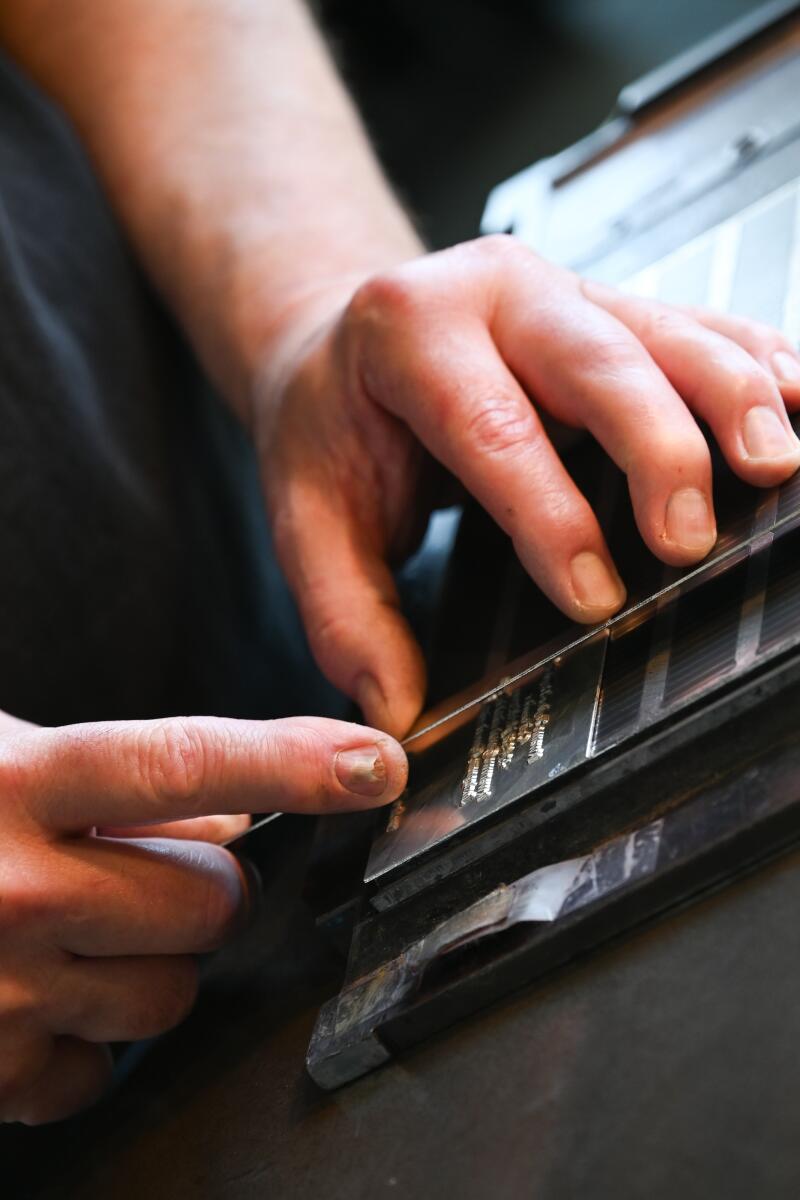
Brooks Ocon lines up a block for printing.
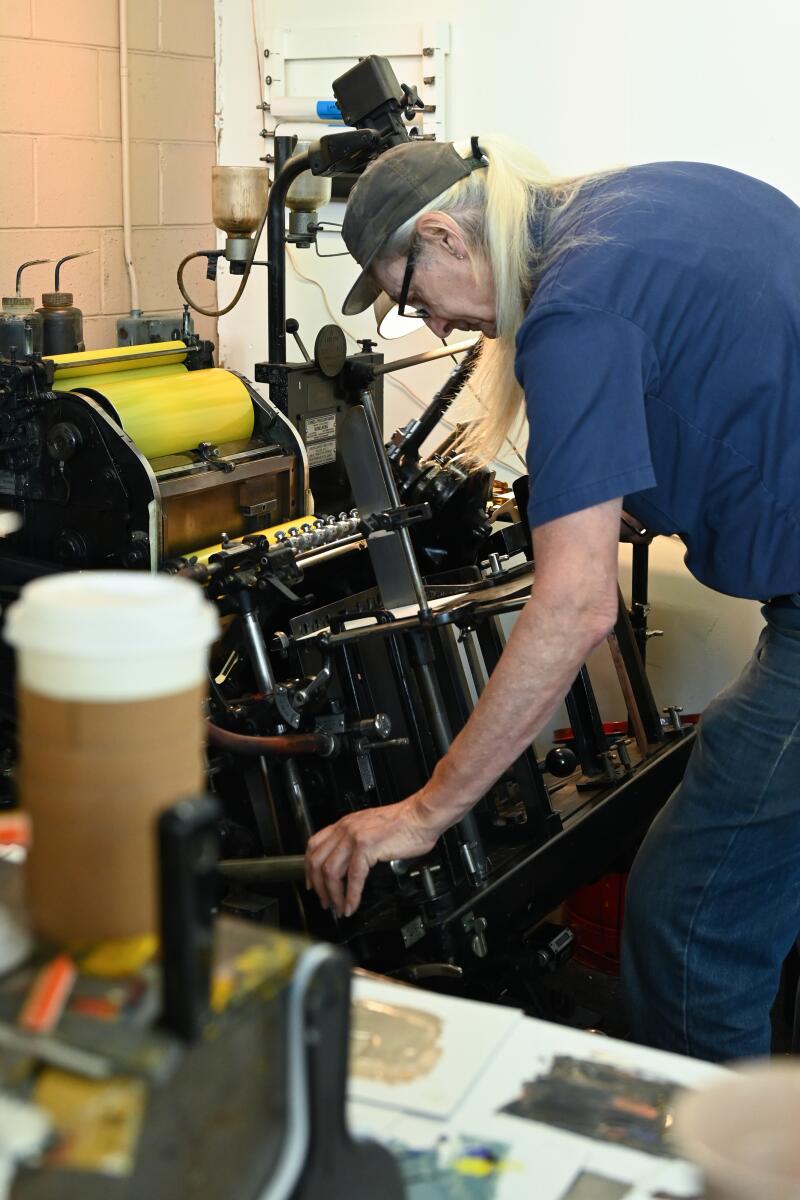
Master printer Bill Berkuta prints an order for a customer.
Another opportune moment came in 1988, when Brooks went on an errand to the HG Daniels art supply store on 6th Street. He couldn't find what he was looking for, so they directed him to McManus & Morgan Fine Art Paper, which was nearby. Brooks noticed a “for rent” sign in an adjacent storefront inside the detailed 1924 Spanish Colonial-style Westlake Square building, designed by architect Everett H. Merrill. It seemed like an ideal place for Aardvark to put down new roots, and his father agreed.
“This was the original art district,” Cary notes, referencing the former concentration of art schools in the area. Otis Art Institute (later renamed Otis College of Art and Design), ArtCenter School (ArtCenter College of Design), and Chouinard Art Institute, which was the predecessor of CalArts, were clustered within blocks of each other before moving to their respective campuses. . Several art supply stores catered to the student population.
However, the initial period in which Aardvark Letterpress became a studio whose services are appreciated among the clientele of celebrities such as Oprah Winfrey and art galleries and fashion houses was not so easy.
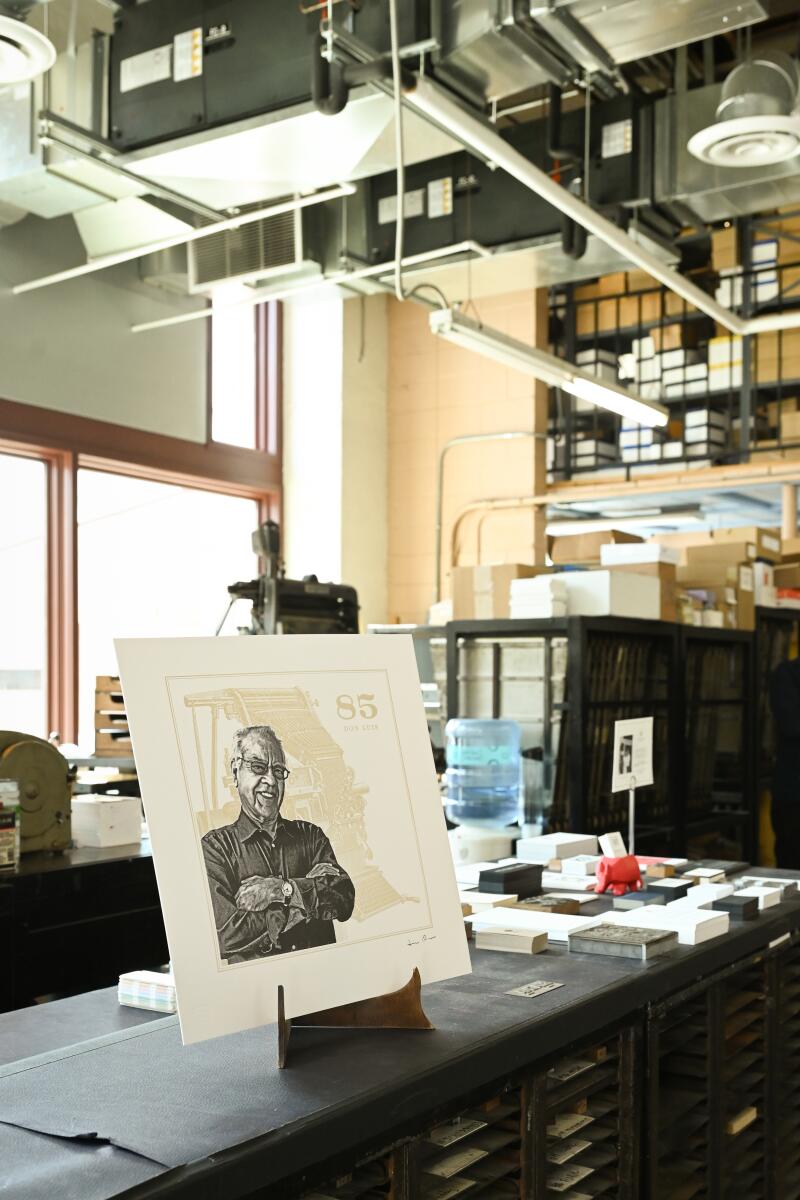
A footprint of founder Luis Ocon at the entrance to Aardvark.
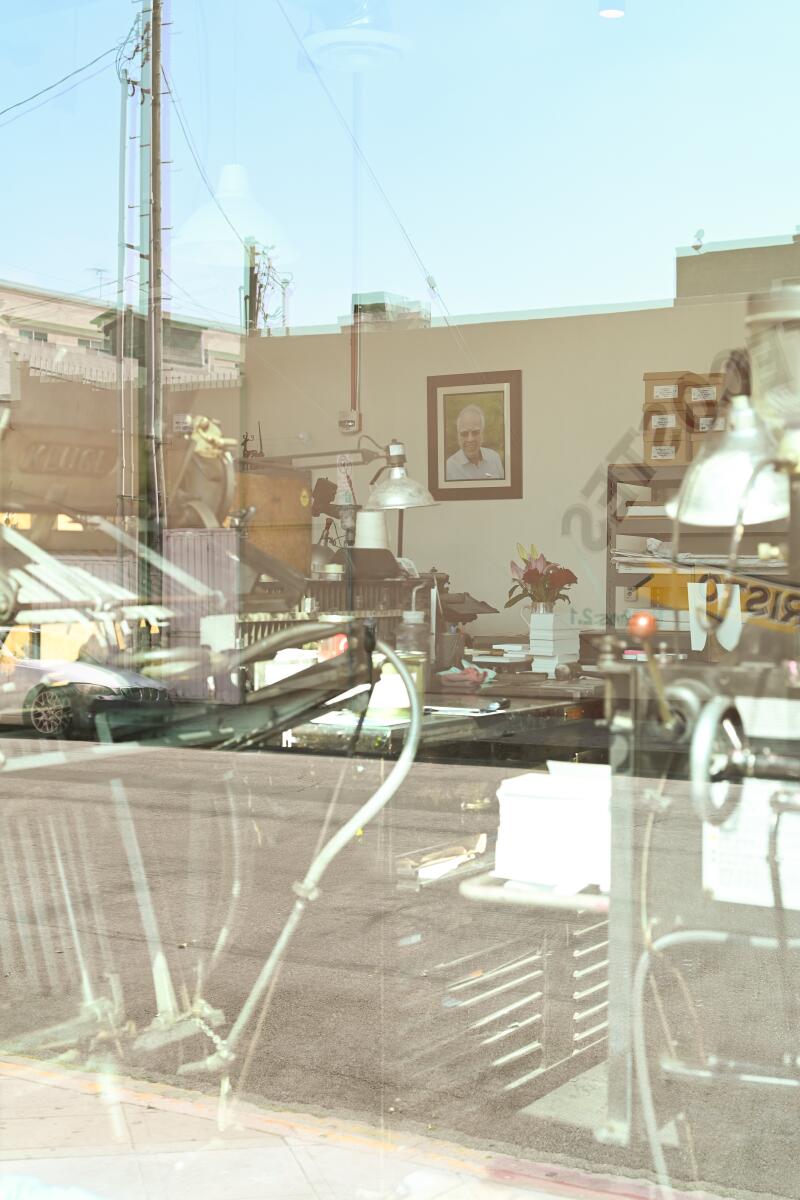
A view of Aardvark from South Carondelet Street.
The purchase of Aardvark Typographers by Luis Ocon, a self-taught newspaper linotype operator who emigrated to the US from Mexico City, from his former boss Ken Matson, coincided with the early adoption of typesetting computerized. “Business started to plummet because no one makes metal type anymore,” Cary explains. A client suggested they learn to print to adapt to new times. “We got our first printing press and branched out into letterpress printing,” Cary recalls.
While Cary earned degrees at UC Berkeley and the University of Minnesota and then embarked on what would be an unsatisfying law career, Brooks and Luis were “struggling” to keep Aardvark afloat. Patriarch Luis, who died last year at the age of 86, was their stepfather who raised them as his own after meeting their mother, Helen, when Luis and Helen worked in the Holland House cafeteria in what were the Britts department store across the street. the original farmers market. (The Ocon brothers also have two sisters and a half-sister.)
Decades before, Aardvark Letterpress was trusted by upscale event planners to create exquisite wedding invitations and featured artists such as Shepard Fairey Partnering with the team to do limited edition letterpress work, the business was hyperlocal. The mariachi musicians would arrive on a Monday morning needing a fresh supply of business cards after a busy weekend promoting their talents.
The Otis Art Institute, in its original location in Westlake, did odd jobs, and Gary Wolin, who still owns the century-old McManus & Morgan, recommended clients who needed printing on the specialty papers he sold. The friendly, closely related businesses remain neighbors after Wolin downsized within the same building. (Newest tenants at the newly renovated property include taste-making firm Commune design and Hannah Hoffman Gallery.)
“We were a secret among graphic designers,” says Cary, who joined the business full time in 1998. Otis alumni would remember the old-school print shop down the street, where ceilings painted with stencils from the 1920s, multiple productions made in Heidelberg, Germany presses, sturdy wooden drawers filled with brass letters in hundreds of fonts and other tools still serve as a portal to a pre-digital age.
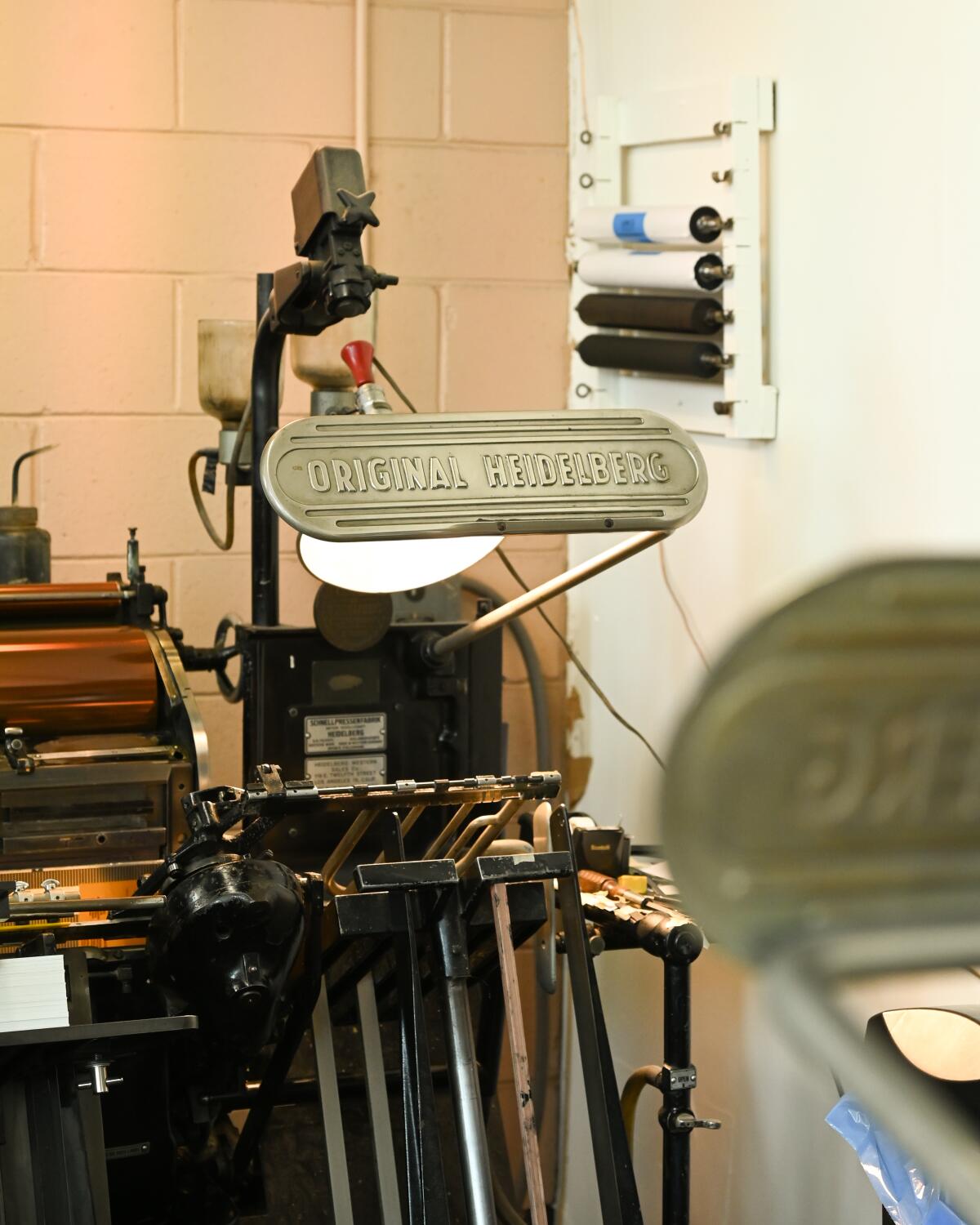
One of Aardvark's six Heidelberg presses, vintage printing machines that apply designs directly to paper.
Because cultural tastes and trends have a way of being cyclical, resisting them ultimately paid off. Cary points to Martha Stewart's championing of letterpress stationery as part of the reason there was a resurgence in the early aughts. Aardvark was ready to meet the new demand. “Once again, it was pure luck, because we had all the ability to type.”
In this analog environment, computers are used to manage the workflow and a processor upstairs transfers digital design files to manufacture polymer plates that are used for most jobs. (The aardvark turns to A&G engraving in Vernon to manufacture photo-etching metal plates for select projects and fine art prints). This team's experience remains unmatched in Los Angeles. To mix inks, for example, Berkuta refers to the color recipes in his well-worn Pantone fan deck and then trusts his eye. And experience. “I'm weighing it in my head,” he says of getting the proportions right.
“I have collaborated with the team at Aardvark studio adjusting plate pressure, ink colors and translucency to achieve sublime effects that no other medium can offer,” says artist Fairey via email.
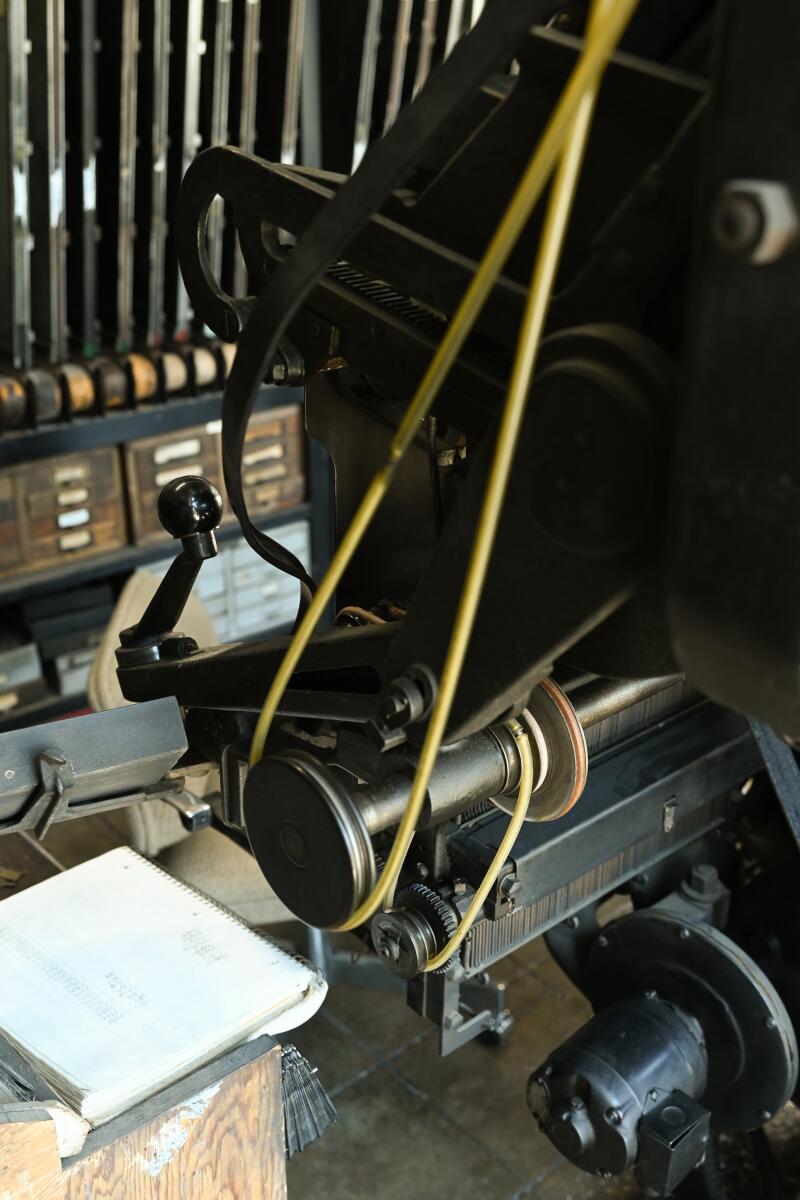
A linotype detail.
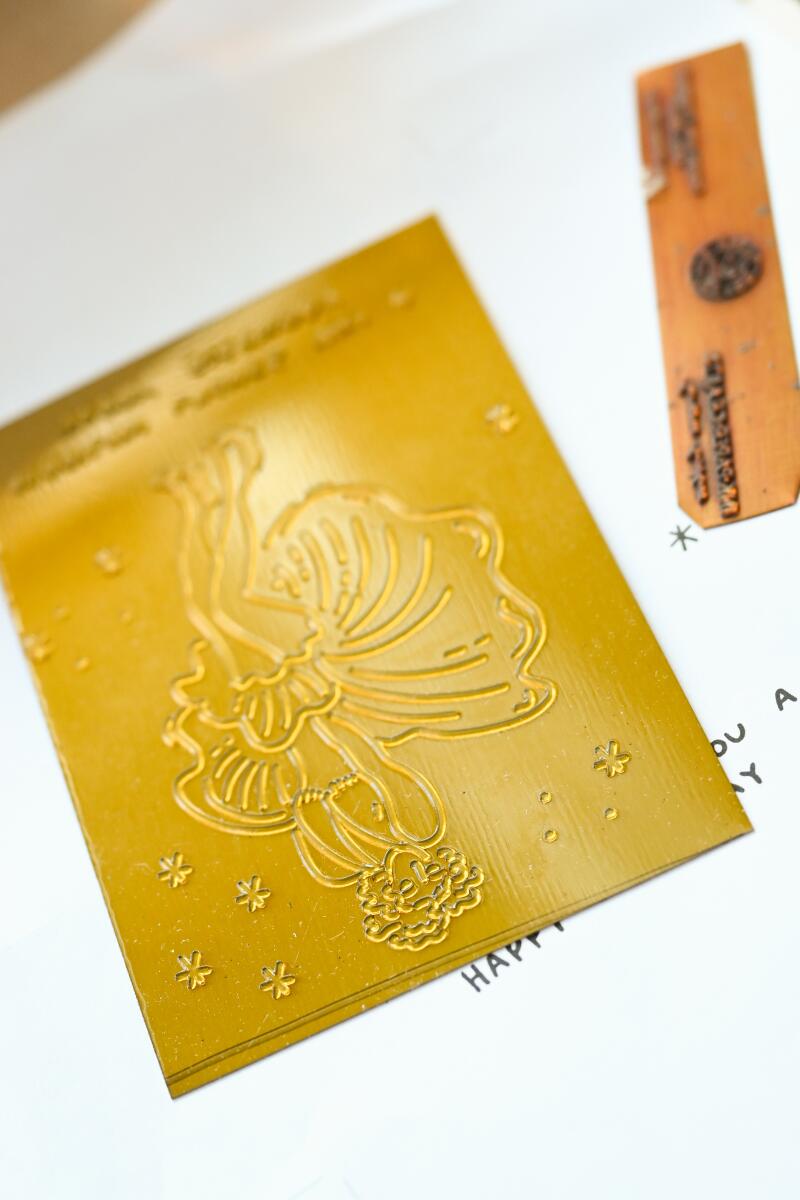
A print of Marilyn Monroe in foil.
“I consider the invitations, menus and other objects that were provided to us for our wedding to be works of art. It turns out that 100 years of experience is worth something! Hamm adds.
Despite the praise, Cary is candid about the challenges of sustaining this artisanal business. “Even printing a simple business card requires a lot more labor, so we can't do it for $50,” he explains. To continue evolving, he is preparing to launch Aardvark Printworks, a collection of typography art featuring images as artists' renderings of iconic Los Angeles landmarks.
“I didn’t appreciate what we were doing,” Cary reflects on his previous relationship with Aardvark Letterpress’ niche business. “I see how it moves people.” Even if the family has yet to come up with a clear succession plan for the future, the Ocons are proud of their legacy. “Is something special. “We are grateful to be able to move forward,” says Cary.
His impact goes beyond Los Angeles. “I value a family-owned business that keeps the art of typography, an important printmaking tradition, alive and accessible to Los Angeles artists and businesses,” Fairey echoes.

